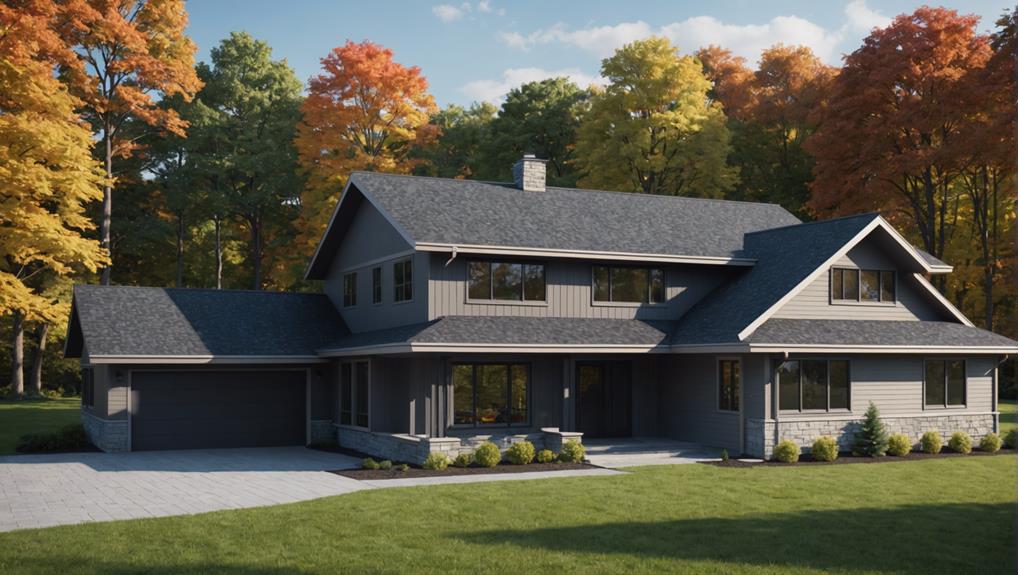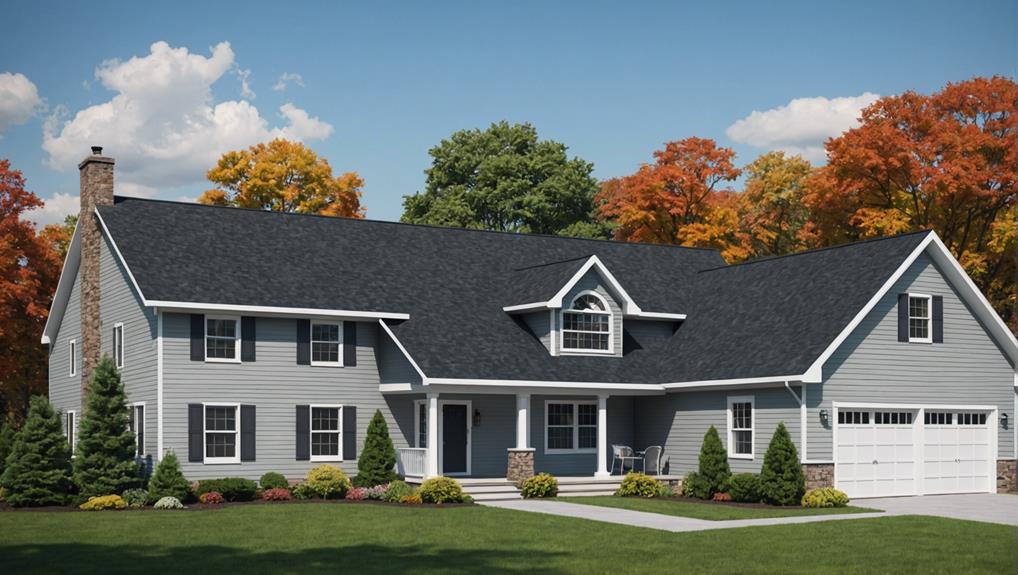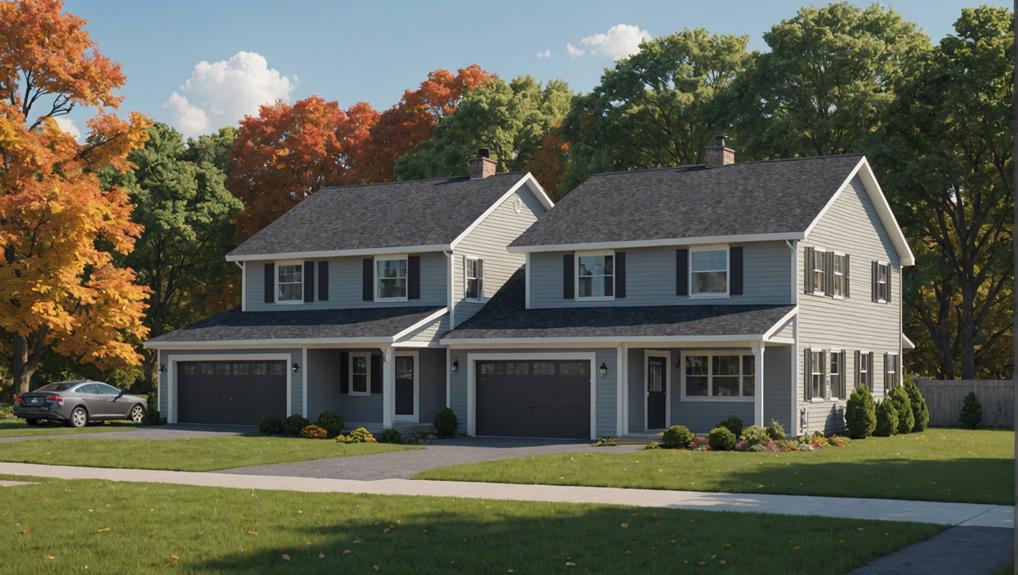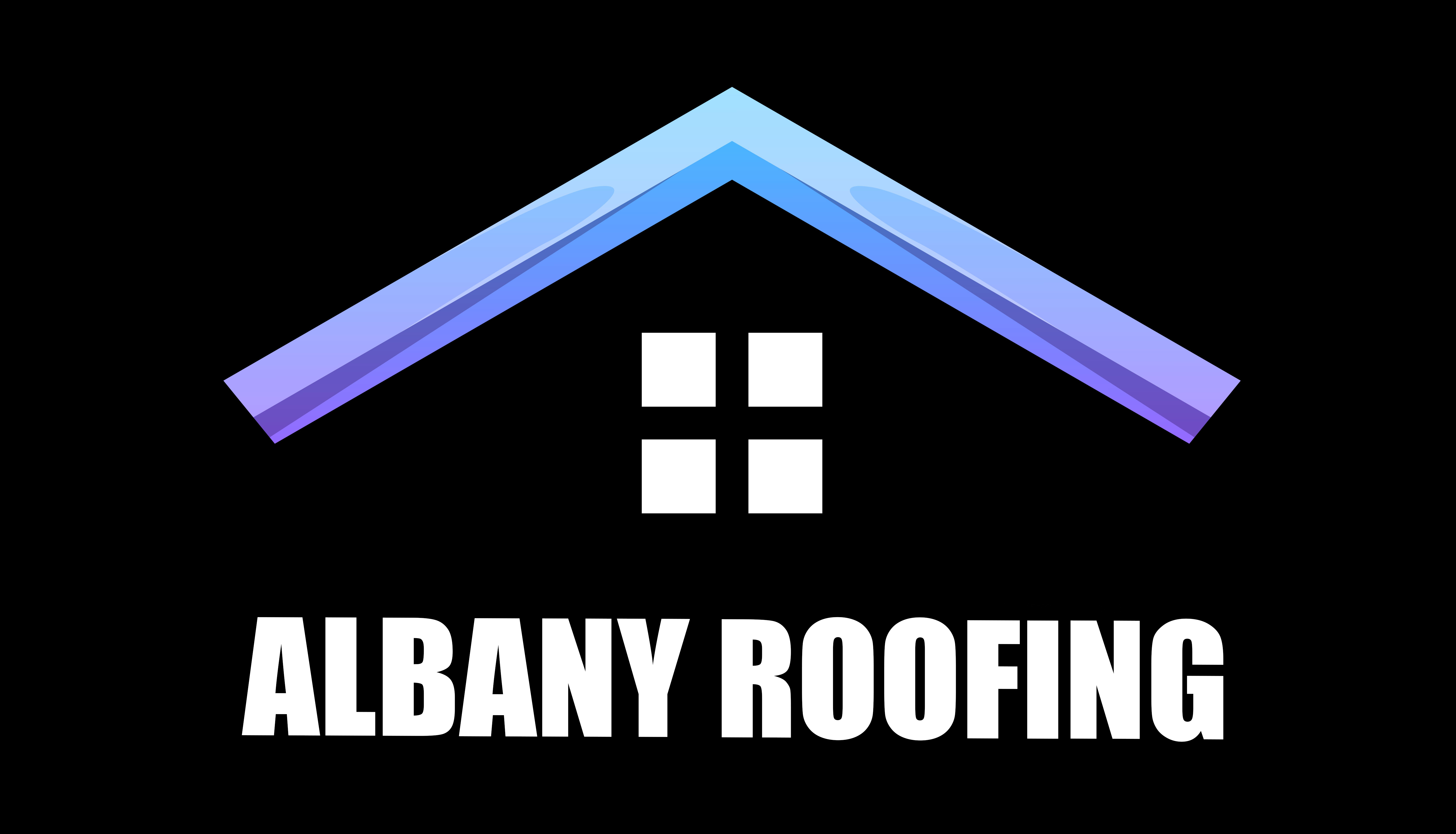Choosing Between Flat and Pitched Roofs in Latham, NY
When deciding between flat and pitched roofs in Latham, NY, consider the aspect of durability. Pitched roofs typically have a lifespan of 30-50 years, whereas flat roofs usually last for about 10-15 years. Maintenance plays a crucial role; pitched roofs generally require less upkeep compared to flat roofs, which demand more frequent maintenance and might necessitate earlier replacement. Ignoring the maintenance of flat roofs can lead to structural damage.
Insulation is another important factor; pitched roofs tend to provide superior thermal insulation. In contrast, flat roofs absorb more solar energy, potentially increasing air conditioning expenses. Pitched roofs also boast better ventilation systems, which help in maintaining efficient temperature regulation. Both roof types require effective guttering systems to ensure proper water drainage.
By considering these elements, you can make a well-informed choice regarding your roofing needs in Latham, NY.
Roof Durability and Longevity

When assessing roof durability and longevity in Latham, NY, pitched roofs emerge as the optimal selection, boasting a lifespan of 30-50 years in comparison to the 10-15 year longevity typical of flat roofs. Pitched roofs provide a more robust solution for residential buildings, necessitating less frequent maintenance throughout their lifespan.
Conversely, flat roofs, while initially less costly to install, demand more regular upkeep and are prone to earlier replacement cycles. This can escalate the cumulative financial burden due to increased repair and replacement needs. Moreover, if flat roofs aren't meticulously maintained, they can precipitate structural impairments, especially under the challenging climatic conditions of Latham.
It's imperative to evaluate both the longevity and maintenance demands when choosing between flat and pitched roofs to ensure a decision that's congruent with architectural design principles. Notably, pitched roofs require minimal maintenance and deliver extended durability, providing superior protection for your property over the long term.
Insulation and Energy Efficiency

Enhance your property's energy efficiency by carefully evaluating the insulation advantages of pitched roofs in comparison to flat roofs.
Pitched roofs excel in thermal insulation, thereby enhancing energy efficiency more effectively than flat roofs. Typically, flat roofs exhibit higher rates of heat absorption, particularly during the summer months, which results in increased energy usage for cooling purposes.
Conversely, pitched roofs facilitate better ventilation, aiding in the regulation of indoor temperatures without the need for excessive energy expenditure. The process of insulating a pitched roof proves to be highly efficient in conserving energy and lowering the costs associated with heating and cooling, in contrast to flat roofs.
Guttering Needs and Drainage

Proper guttering systems and efficient drainage are essential components for safeguarding the longevity and maintaining the structural integrity of both flat and pitched roofs in Latham, NY. For flat roofs in this region, it's imperative to install adequate guttering to mitigate the risk of water pooling, which can precipitate potential structural impairments over time.
Conversely, pitched roofs utilize a combination of gutters and downspouts to proficiently channel rainwater, thereby ensuring optimal drainage and diminishing the likelihood of water-induced damage.
For flat roofs, establishing a robust guttering framework is crucial to facilitate effective water runoff and prevent the accumulation of water, which could lead to various complications. Regular maintenance of gutter systems is critical for pitched roofs in Latham to avert blockages and sustain efficient water flow.
Overlooking gutter upkeep can lead to significant water damage, subsequently jeopardizing the structural integrity of roofs of all configurations. Therefore, prioritizing guttering requirements and effective drainage measures is essential for preserving your roof's condition and prolonging its service life in Latham, NY.
Maintenance Requirements and Costs

To ensure the durability of your roofing structure in Latham, NY, comprehending the maintenance requisites and associated financial implications is crucial, particularly when evaluating flat versus pitched roofs.
Flat roofs, prone to water accumulation, typically require more frequent upkeep as compared to their pitched counterparts. This heightened demand for maintenance can lead to increased costs over time, impacting the overall economic efficiency of the roofing system.
Conversely, pitched roofs are characterized by their lower maintenance demands, which translates into diminished long-term upkeep expenses. Effective maintenance for flat roofs includes routine assessments, ensuring the cleanliness of drainage systems, and swiftly addressing any indications of deterioration to forestall expensive remediations.
Committing to professional upkeep for both flat and pitched roofs can markedly prolong their service life and prevent costly repairs in the future. By familiarizing yourself with the maintenance necessities and expenditures linked to flat and pitched roofs, you can make a well-informed choice that aligns with your fiscal constraints and long-term roofing objectives.
Frequently Asked Questions
Which Is Better, a Flat Roof or a Pitched Roof?
When making a decision between a flat roof or a pitched roof, assess your primary objectives.
Flat roofs are generally more economical in terms of initial investment, whereas pitched roofs are renowned for their extended durability.
Flat roofs complement contemporary architectural aesthetics, whereas pitched roofs are more common in classical residential designs.
Pitched roofs offer superior water drainage capabilities, particularly beneficial in areas prone to intense precipitation.
Your selection should weigh factors such as initial expense, lifespan, and the architectural design of the building.
Which Is Better, a Flat or a Sloped Roof?
When making a decision between a flat or a sloped roof, it's important to consider essential factors like maintenance requirements and the local climate conditions.
Sloped roofs, characterized by their angled design, generally offer a longer lifespan and enhanced drainage capabilities, which are particularly beneficial in regions experiencing substantial rainfall or heavy snowfall.
On the other hand, flat roofs, known for their horizontal or nearly horizontal surfaces, may present a more cost-effective solution initially but tend to require more frequent maintenance and typically possess a shorter lifespan.
It's crucial to evaluate your priorities, such as the long-term investment value and ongoing upkeep, to determine which roofing option best aligns with your specific needs.
What Are the Disadvantages of a Pitched Roof?
When evaluating the disadvantages of a pitched roof, several aspects come into play.
Firstly, they generally involve a higher initial investment, potentially clashing with contemporary architectural aesthetics, and provide fewer stylistic variations.
Additionally, pitched roofs necessitate increased quantities of building materials and demand more extensive installation time relative to their flat counterparts.
Consequently, for individuals prioritizing speed, budget-friendliness, and design flexibility, a pitched roof may not be the optimal choice.
What Are the Disadvantages of a Sloped Roof?
When evaluating sloped roofing systems, it's important to consider that they generally present higher initial financial investments and may not conform to contemporary architectural aesthetics.
Sloped roofs offer restricted architectural versatility and necessitate increased quantities of building materials for their construction.
Furthermore, the installation process for sloped roofs usually extends over a longer period when compared to their flat roof counterparts.
These considerations could influence your decision-making strategy when selecting among various roofing options.
Conclusion
When picking a roof for your home in Latham, NY, consider factors such as longevity, energy efficiency, water resistance, and maintenance requirements. Flat roofs and pitched roofs each have their own advantages and disadvantages, so choose the type that aligns with your preferences and financial constraints. Consulting with a professional roofer is advisable to determine the most suitable option for ensuring long-lasting protection for your home.
It's crucial to weigh all these factors and make an informed decision that meets your specific needs and fits within your budget. A well-maintained roof not only enhances the aesthetic appeal of your home but also provides essential protection against the elements.
